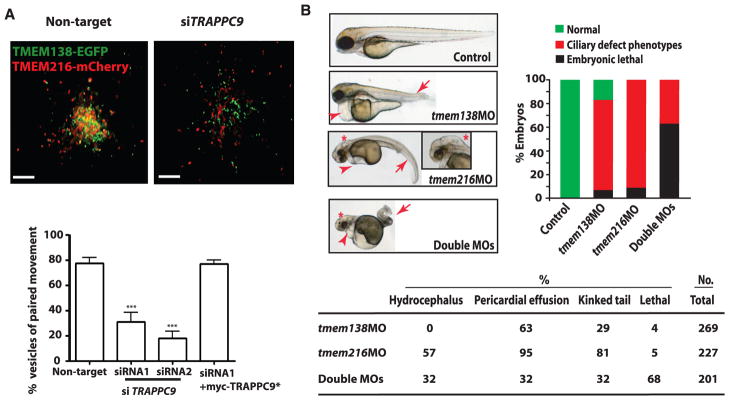Fig. 4.

Functional relatedness of TMEM138 and TMEM216. (A) Live-cell imaging shows that knockdown of TRAPPC9, a major subunit of the TRAPPII complex, detached the tethered TMEM138 and TMEM216 vesicles (movies S7 and S8). Defects in tethering were largely rescued by myc-TRAPPC9* (9). ***P < 0.001 (by one-way ANOVA with Bonferroni posttest, n = 90 to 110). Scale bars, 5 μm. Error bars indicate SEM. (B) Injection of translation-blocking antisense morpholinos (MOs) to tmem138 (6 ng), tmem216 (4 ng), or double MOs in WT (AB) zebrafish embryos leads to ciliary phenotypes of curved or kinked tail (arrows) and heart edema (arrowheads) at 3 days post-fertilization in a synergistic and dose-dependent manner (fig. S18A). Only tmem216 morphants present hydrocephalus (*) (>50 embryos for each condition) (fig. S18B).
